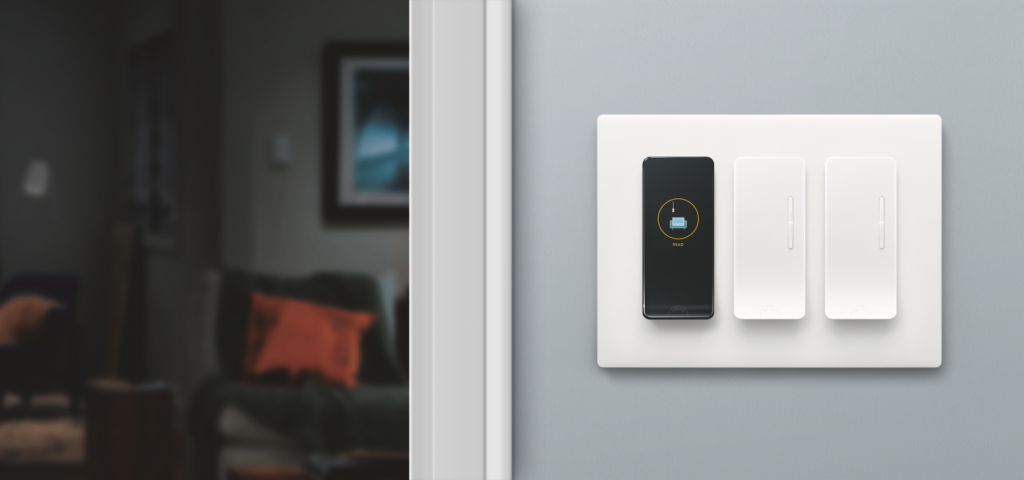
First Let us understand from where did switches originated
The history of switches dates back to the late 19th century when the first electrical switches were developed to control the flow of electricity in homes and businesses. These early switches were simple mechanical devices that used a lever or button to turn the electricity on and off.
Over time, switches evolved to include new features, such as dimming and multiple speeds, to meet the growing needs of consumers. In the mid-20th century, the development of new materials and manufacturing processes led to the production of switches that were smaller, more reliable, and easier to install.
In the 1960s and 1970s, the rise of electronics and the growth of the computer industry led to the development of new types of switches, including toggle switches, rocker switches, and slide switches. These new switches were designed to meet the specific needs of electronic devices and were used in a wide range of applications, from computer keyboards to industrial machinery.
In recent years, the growth of the Internet of Things (IoT) and the rise of home automation has led to the development of smart switches, which can be controlled remotely via smartphone or tablet, or integrated with other smart home devices. These new switches offer greater convenience and control and are changing the way people use and manage their electrical systems.
In addition to the technological advancements in switches, there have also been significant changes in the way switches are designed and used. In the past, switches were often bulky and obtrusive, but today’s switches are sleek and modern, designed to blend in with the surrounding décor.
Another important trend in switch design has been the move towards switchless design. In this approach, switches are incorporated into the design of other objects, such as light fixtures or furniture, making them less noticeable and easier to use.
Switches have also become more user-friendly, with many new designs incorporating intuitive interfaces and touch controls. This has made it easier for people to control their lighting and other devices, even if they have limited technical knowledge.
Finally, the growth of the smart home industry has made it possible to integrate switches with other home automation devices, such as smart thermostats, security systems, and voice-controlled assistants. This allows users to create a fully automated and connected home, where all devices work together to meet their specific needs.
What are Smart Switches?
Smart switches are electrical switches that can be controlled and programmed through a smartphone app, voice-controlled device, or other connected devices. They provide a convenient way to control the lights and appliances in your home, allowing you to turn them on and off remotely, set schedules, and adjust brightness. Some smart switches also offer advanced features such as occupancy sensing, energy monitoring, and integration with smart home systems. With smart switches, you can take control of your energy usage and reduce waste, while also improving the overall functionality and safety of your home’s electrical system.
How are Smart switches different from Standard Switches?
- Smart switches are connected to a network, allowing remote control and automation through a smartphone app or voice assistant, while Standard switches only turn on/off lights manually, while smart switches can be programmed to schedule, dim, and set scenes.
- Standard switches don’t have built-in energy monitoring, but smart switches can track energy usage and costs.
- Standard switches don’t have additional features like geofencing or voice control, while Smart switches often have a wider range of compatibility with smart home systems and other smart devices.
- Installation of smart switches may require additional wiring and setup, compared to a standard switch.
- Some smart switches have built-in Wi-Fi, allowing for easy setup and installation without the need for a separate hub.
- Smart switches typically cost more than standard switches.
- Some smart switches have touch screens, allowing for more intuitive control and customization options.
- Some smart switches are compatible with voice assistants like Amazon Alexa and Google Assistant, allowing for voice control of lights.
- Standard switches don’t have software updates, while smart switches can receive updates to improve functionality and add new features.
- Smart switches can integrate with other smart home devices, creating a seamless and automated home experience.
- Some smart switches offer multi-way switching, allowing multiple switches to control the same lights from different locations.
- Some smart switches have backup power, ensuring that they continue to work even during power outages.
Where can smart switches be used?
Smart switches can be used in a variety of places, including:
- Homes: to control and automate lighting, fans, and other electrical devices.
- Offices: to automate lighting and control energy usage.
- Retail spaces: to control lighting and create ambiance.
- Hospitals: to control lighting and minimise energy waste.
- Hotels: to provide guests with a customizable and automated lighting experience.
- Schools: to control lighting and conserve energy.
- Restaurants: to control lighting and create atmosphere.
- Warehouses: to control lighting and minimise energy waste.
Benefits of Smart Switches?
Smart switches allow for a more sustainable lifestyle by enabling efficient use of electricity. Some benefits of using smart switches include:
- Remote control: Control your lights and appliances from anywhere using a smartphone or voice-controlled device.
- Energy savings: Set schedules and adjust brightness to minimize energy usage and save on electricity bills.
- Smart home integration: Integrate with smart home systems such as Amazon Alexa or Google Home for hands-free control.
- Away mode: Automatically turn lights and appliances off when you leave the house to reduce energy waste.
- Monitoring: Keep track of your energy usage and see where you can make adjustments for even more savings.
- LED compatibility: Many smart switches are compatible with LED lights, which are more energy-efficient than traditional bulbs.
- By implementing smart switches in your home, you can take control of your energy usage and reduce waste, contributing to a more sustainable lifestyle.
- Automation: Automate your home with smart switches, such as turning off lights when no one is in the room or turning off appliances when they’re not in use.
- Safety: Some smart switches include features such as a random light mode, which can deter burglars by giving the appearance that someone is home.
- Compatibility: Choose smart switches that are compatible with your existing wiring and devices.
- Easy installation: Many smart switches can be easily installed by a DIY enthusiast, without the need for an electrician.
- Style: Choose smart switches that complement your home decor and blend in seamlessly with your wall plates.
- Cost-effective: Smart switches can be a cost-effective way to upgrade your home’s lighting and appliances to be more energy efficient.
Conclusion:
Smart switches play an important role in promoting a sustainable lifestyle. With features such as remote control, energy savings, smart home integration, occupancy sensing, dimming capabilities, and improved safety, smart switches provide a convenient and effective way to manage your energy usage. By incorporating smart switches into your home, you can take control of your electricity consumption, reduce waste, and contribute to a more sustainable future.
